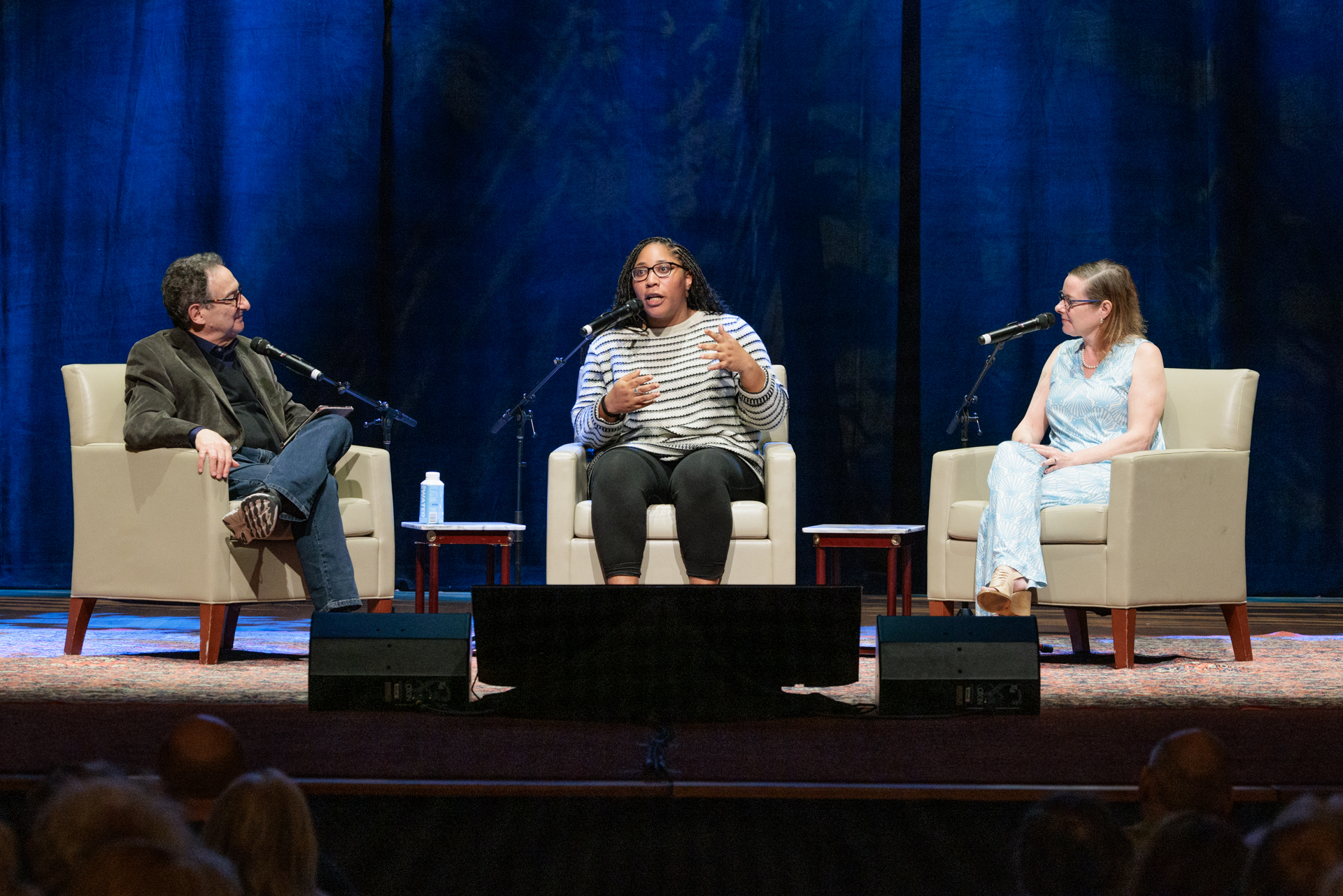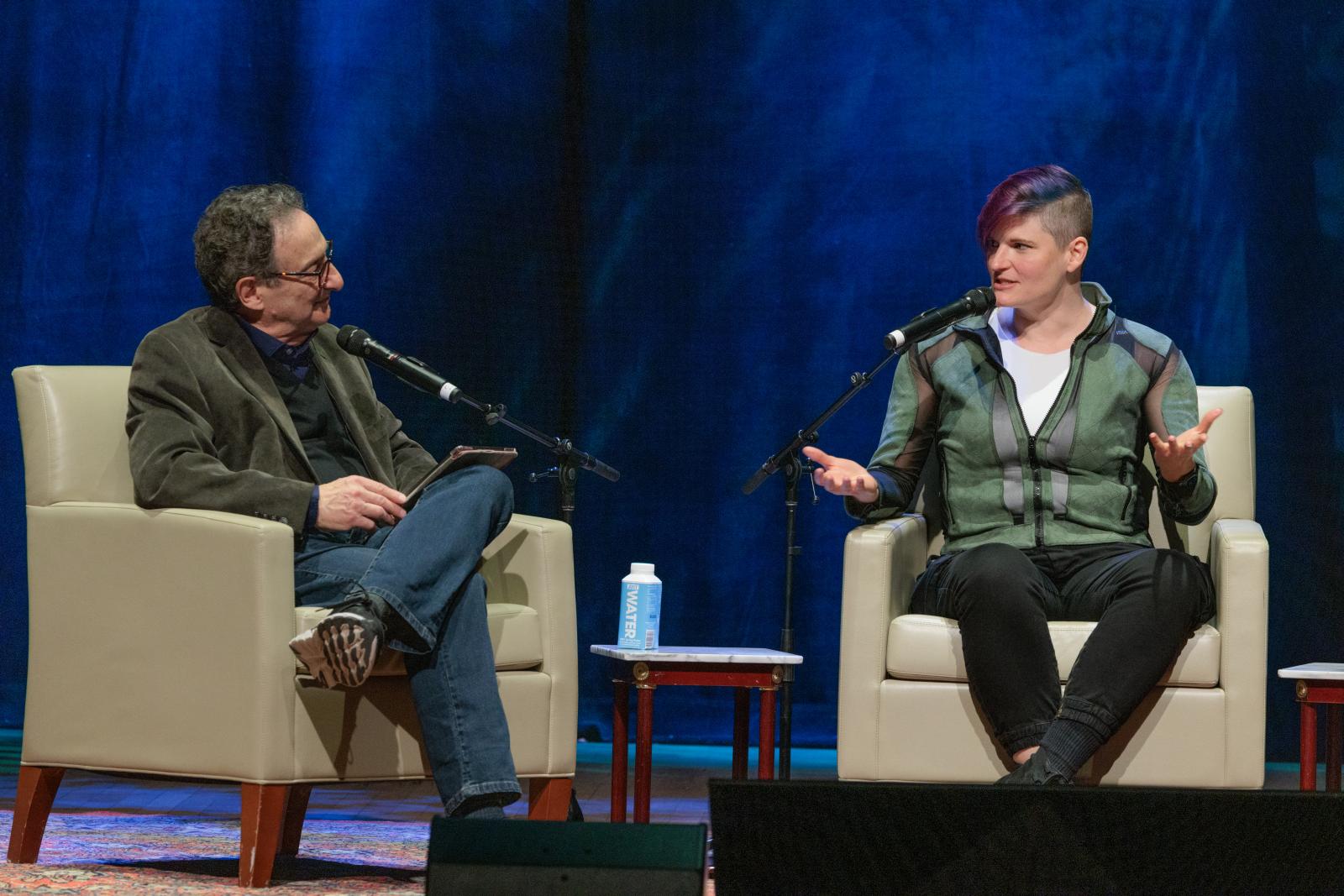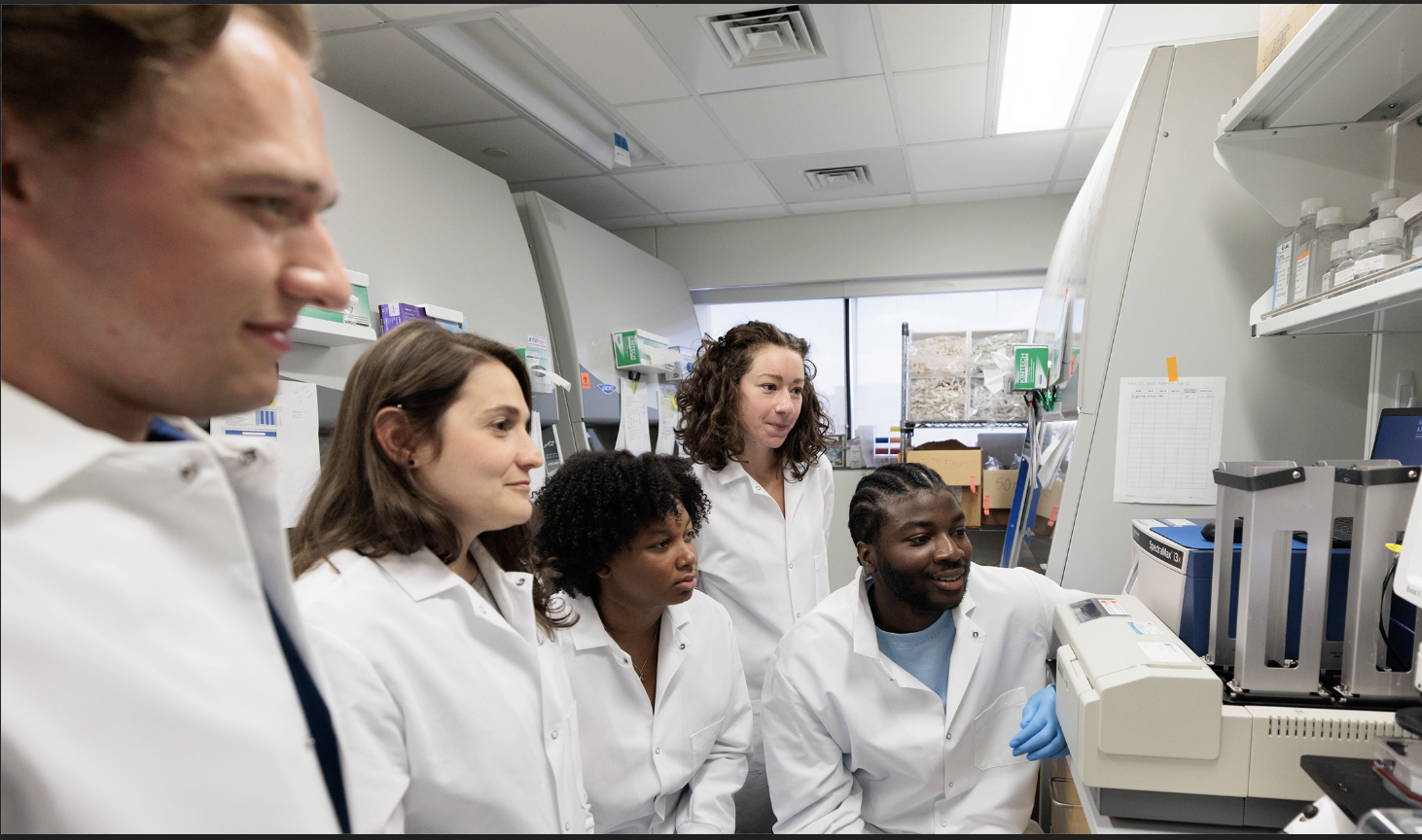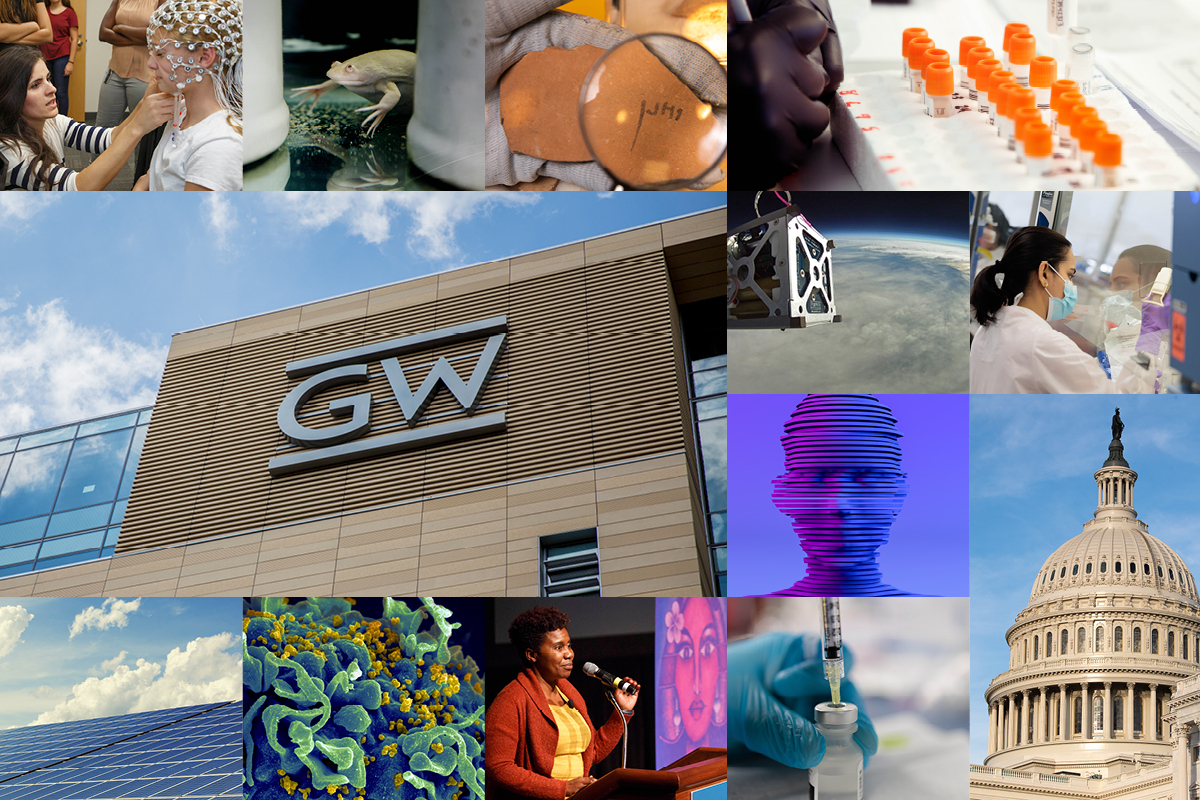Considering the steady stream of news stories like the recent one about a GW doctoral student and a team of Smithsonian paleontologists who discovered a proto-species of amphibian, it’s safe to say that at GW, science is in the air. It will soon be on the air, too, in an episode of the popular radio show “Science Friday” performed and taped before a live audience at Lisner Auditorium on Saturday. It will be broadcast April 5.
Science enthusiasts packed Lisner Auditorium for the event, sponsored by GW's Office of the Vice Provost for Research and co-presented with WAMU. If you listen to the broadcast, you’ll hear them cheering loudly every time host Ira Flatow said his show was "live from George Washington University.”
President Ellen M. Granberg welcomed the crowd and revealed that she has been a fan of “Science Friday” since 1991, when she listened to its first episode. She cited the evening’s large audience as evidence of the GW community’s interest in science.
“Every day at GW, we celebrate and support high-impact science and original scholarship on topics ranging from artificial intelligence and climate change to public health and medicine,” Granberg said, adding that she is proud of the faculty, staff and students whose research pursuits have heightened GW’s impact. Sharing the knowledge gained is key to the scientific endeavor, she noted.
“Another important part of advancing and broadening the impact of scientific achievement is sharing discoveries and new knowledge with the public,” Granberg said. “This is critical to fostering a national culture of understanding and appreciation for science, igniting curiosity in a new generation of scientists and engineers, and inspiring multidisciplinary education and innovation that leads to a better and brighter future.”
The theme of the program recorded at Lisner Auditorium was “National Treasures.” In four respective segments, the evening’s show explored the work done by conservators at the National Archives to preserve documents such as the Declaration of Independence and the U.S. Constitution; trees in the Baltimore-Washington area and various efforts to conserve them; oyster farming in Chesapeake Bay and its environmental impact; and what a pathologist at Smithsonian’s National Zoo and Conservation Biology Institute can learn from doing animal autopsies.
From the U.S. National Archives and Records Administration, records conservator Saira Haqqi and conservation scientist Mark Ormsby talked about the push toward digitization in their profession as well as the challenges of dealing with paper and other materials—and inks—from previous eras. In response to a question from the audience about how they decide what to preserve, Haqqi acknowledged that today’s archivists are limited to working with information that people from the past thought was important. Still, she added, bureaucratic records can be revealing.
Another audience member asked the conservator if she worried about destroying a treasure.
“You have to live with the knowledge that you might be truly ruining something,” Haqqi said. “One of the ways that the profession has developed to deal with this is to apply a principle of reversibility,” meaning they try to ensure that the steps they take can be reversed. Sometimes that means carefully photographing a document before applying any further conservation techniques.
When someone asked about what sort of security system is in place at the National Archives, Ormsby said he could see his boss in the audience and answered “no comment.”
A younger member of the audience asked Flatow how he decided which stories to cover on “Science Friday.”
“Every Monday, we have a story meeting,” Flatow said. “We get together and look at hundreds of sources—science journals, papers, press releases, emails—and we go through them and decide what we think will be the most important.”
Flatow’s guests during the segment on trees were Mike Alonzo, an assistant professor of environmental science at American University, and Ryan Alston, communications director at the Baltimore Tree Trust. Introducing the segment, Flatow said, “Trees do a lot more in our cities than just look good. They play an important role in absorbing heat, sequestering carbon dioxide and preventing soil erosion.”
Panelists for the segment on oysters in the Chesapeake Bay included Imani Black, a Chesapeake Bay oyster farmer and the founder of Minorities in Aquaculture and GW faculty member Tara Scully, associate professor of biology and director of the sustainability minor. Scully is director of curriculum development for the Global Food Institute.
Oysters are really just “glorified rocks” that “don’t give you a fuss,” Black said. Though she is one of few Black oyster farmers today, she noted that Black people in the Chesapeake Bay area have historically been pushed to the water’s edge. Both Frederick Douglass and Harriet Tubman used their maritime skills to escape slavery, she added.
But oysters are more than a plentiful source of dietary protein, Scully said. By filtering a surprisingly large quantity of water each day, they also make the environment more sustainable for other animals.
In response to Flatow’s question about the current population of oysters in the bay, Scully said it’s very low in comparison to what it has been historically.
“But the good news is, in the past two years we’ve seen the counts of juveniles go way up,” Scully said. She said this increase is due to restoration efforts.
Joining Flatow for the final segment was Kali Holder, a pathologist at Smithsonian’s National Zoo and Conservation Biology Institute. Holder spoke about doing autopsies on various animals, including a caecilian. These legless, blind amphibians are unusual in many ways, not least because their young have teeth in utero and get their nutrition by grazing on the lining of their mother’s uterine wall—a detail that inspired Holder to joke, “Mom nom nom!”
Holder’s work helps scientists and caregivers learn more about animals and what makes them sick, and also has implications for humans when it comes to diseases to which they, along with other animals, are vulnerable.
Another GW faculty member, Megan Leftwich, professor in the School of Engineering and Applied Science, appeared on “Science Friday” this week before the taping in Lisner Auditorium. In the segment “Swimming Sea Lions Teach Engineers About Fluid Dynamics,” Leftwich told Flatow and his listeners what the movements of these skilled underwater navigators can teach engineers.
Pamela M. Norris, vice provost for research, said “Science Friday” and other shows of the kind play an important cultural role.
“Science literacy fuels progress,” said Norris. “Programs like ‘Science Friday’ make important contributions to the public dialogue by demystifying science, fostering an appreciation for the societal impact of science and empowering the public to make informed decisions.”










